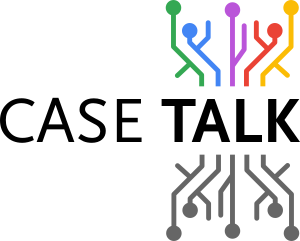In the world of data modeling, a persistent challenge emerges: how do we ensure that technical implementations truly reflect business requirements? Marco Wobben's presentation on Fully Communication Oriented Information Modeling (FCOIM) at the Meetup group Data Modeling Monday, hosted by Bob Conway, offers a compelling approach that places domain expert communication at the center of the modeling process.
The Communication Gap in Traditional Modeling
Traditional data modeling often begins with technical artifacts—entities, attributes, and relationships drawn by IT professionals based on their interpretation of business needs. This approach introduces a critical weakness: the "lost in translation" effect where business intent becomes filtered through technical assumptions.
FCOIM takes a fundamentally different approach. Rather than starting with diagrams, it begins with natural language fact statements from domain experts. These statements, such as "Employee 465 performs a checkup for patient 12349 on 12/10/2019 at 2 o'clock," become the atomic building blocks of the information model.
The Methodology in Practice
The FCOIM process follows a systematic cycle:
Fact Collection: Domain experts provide concrete examples in their natural language, describing real scenarios from their work environment.
Information Grammar Development: These fact statements are analyzed to extract their underlying structure, revealing relationships, constraints, and semantic patterns without imposing technical interpretations.
Model Validation: The information grammar is verified by presenting the domain experts with questions derived from their original statements, allowing them to confirm or correct business rules.
Artifact Generation: Once validated, the model can generate various technical implementations—database schemas, UML diagrams, JSON schemas, or XML structures.
Addressing Business Constraints Through Examples
One of FCOIM's most powerful features is its approach to business rule discovery. Rather than asking abstract questions about constraints, the methodology presents concrete scenarios to domain experts.
For instance, when modeling medical checkups, the system might ask: "Can employee 465 perform checkups on multiple patients?" or "Can multiple employees be present at the same checkup?" The answers to these questions directly drive the resulting data model structure, determining whether relationships are one-to-one, one-to-many, or many-to-many.
This example-driven validation ensures that business constraints are captured accurately rather than assumed by technical teams.
Handling Language Complexity
Critics might argue that natural language introduces ambiguity—and they're correct. The same concept can be expressed multiple ways, and words can have different meanings in different contexts. FCOIM addresses this through several mechanisms:
Synonyms and Homonyms: The methodology explicitly handles cases where different departments use different terms for the same concept (customer vs. client vs. lead) or where the same term has different meanings in different contexts.
Contextual Annotation: When ambiguity exists, the system allows for contextual markers that disambiguate meaning without losing the natural language foundation.
Iterative Refinement: The modeling process is inherently collaborative, requiring ongoing dialogue between modelers and domain experts to resolve unclear statements.
Governance and Traceability
FCOIM provides robust governance capabilities by maintaining complete traceability from fact statements to technical implementations. Every element in the final system can be traced back to specific domain expert communications, complete with metadata about who said what and when.
This traceability becomes crucial in regulated industries where audit trails are essential, and in complex organizations where understanding the business rationale behind technical decisions is vital for maintenance and evolution.
Comparison with Related Methodologies
FCOIM shares DNA with Object Role Modeling (ORM) and NIAM (Natural Language Information Analysis Method), all emerging from research into binary relationships and semantics in the 1970s. However, FCOIM distinguishes itself through its emphasis on communication capture rather than diagram creation.
While ORM focuses on rich constraint modeling through drawing tools, FCOIM prioritizes the analysis of domain expert language patterns. This difference in approach leads to distinct outcomes: ORM excels at constraint visualization, while FCOIM excels at communication preservation and validation.
Practical Applications and Limitations
FCOIM appears particularly well-suited for complex domains where precision is critical—healthcare systems, financial regulations, or safety-critical applications. The methodology's strength lies in environments where the cost of misunderstood requirements far exceeds the investment in thorough domain analysis.
However, the approach requires significant domain expert involvement and may be overkill for simpler applications or rapidly changing requirements where agility trumps precision.
Implementation Considerations
Organizations considering FCOIM should evaluate several factors:
Domain Expert Availability: The methodology requires sustained engagement from business experts who can articulate their processes clearly and validate technical interpretations.
Complexity Justification: The overhead of fact-oriented modeling is justified primarily in complex domains where traditional approaches have failed to capture essential business nuances.
Tool Investment: While the methodology can be applied manually, practical implementation typically requires specialized software to manage the complexity of fact collection, grammar analysis, and artifact generation.
Looking Forward
FCOIM represents a maturation of fact-oriented modeling approaches, emphasizing the fundamental principle that data belongs to domain experts, not IT departments. Its focus on communication preservation and validation addresses a genuine pain point in traditional modeling approaches.
The methodology's success ultimately depends on organizational commitment to collaborative modeling and recognition that upfront investment in understanding business communication patterns pays dividends in system quality and maintainability.
For organizations struggling with the traditional challenges of requirements interpretation and system validation, FCOIM offers a disciplined alternative that keeps business communication at the center of the technical design process. Whether this approach becomes mainstream will depend largely on organizations' willingness to invest in deeper collaboration between business and technical teams.


